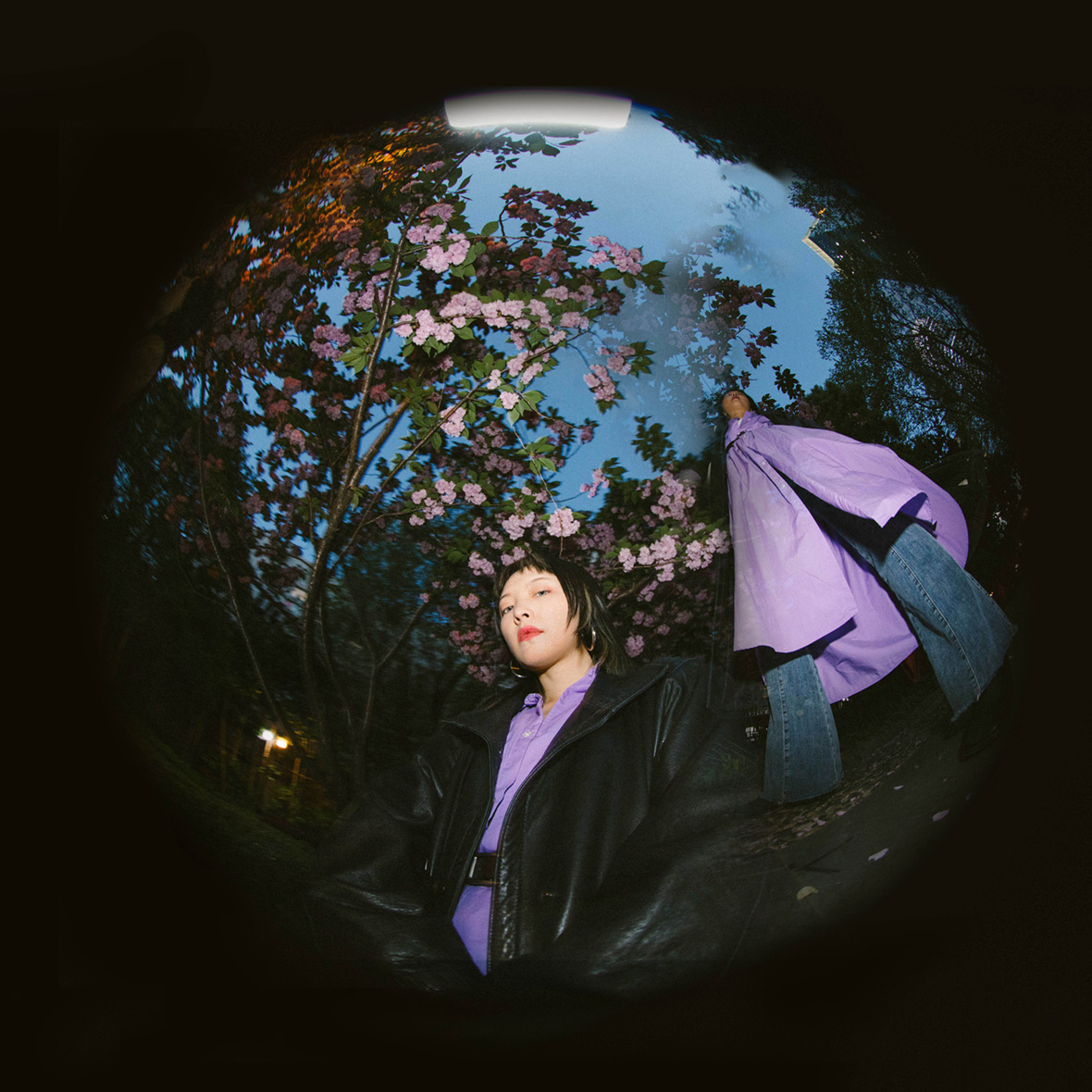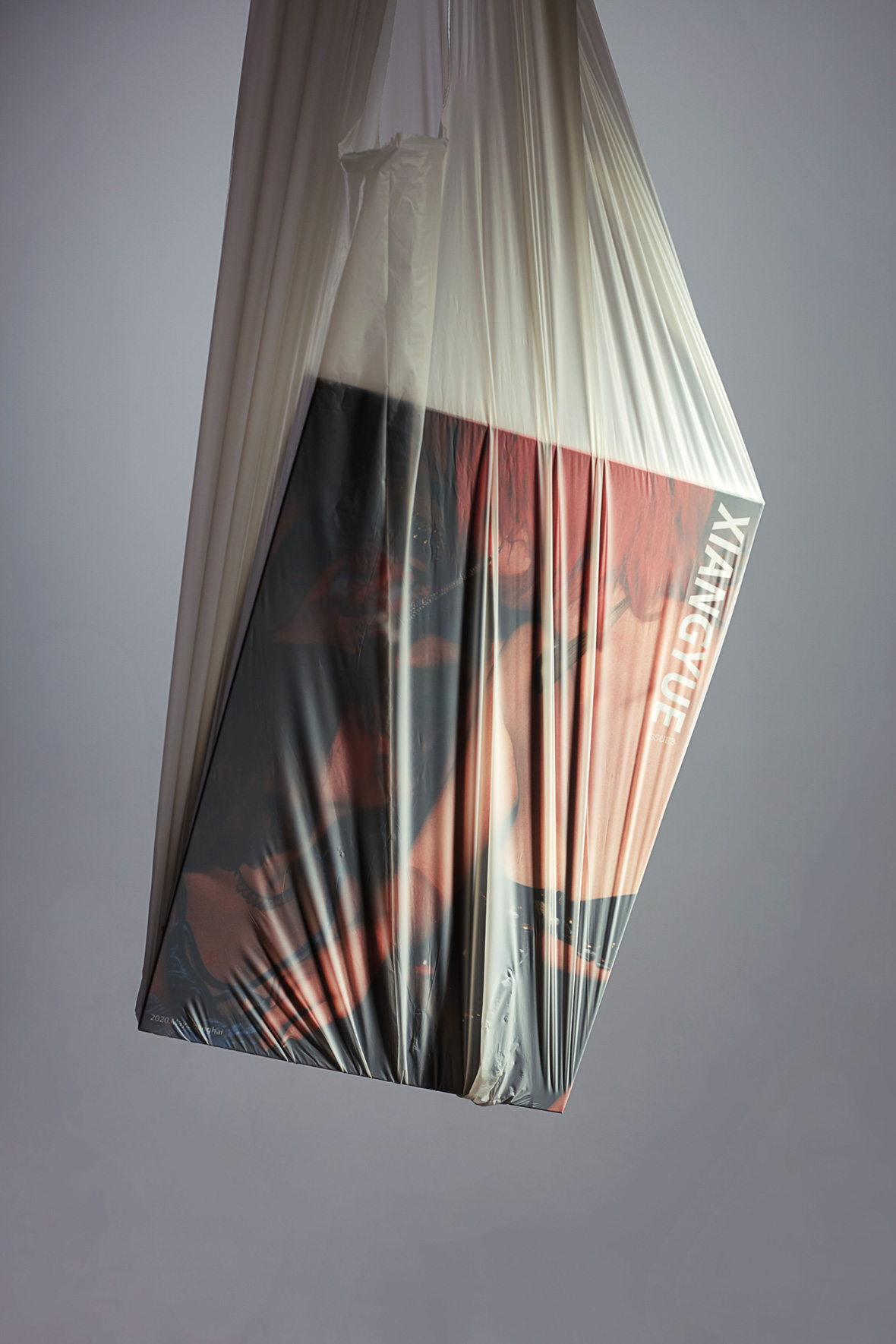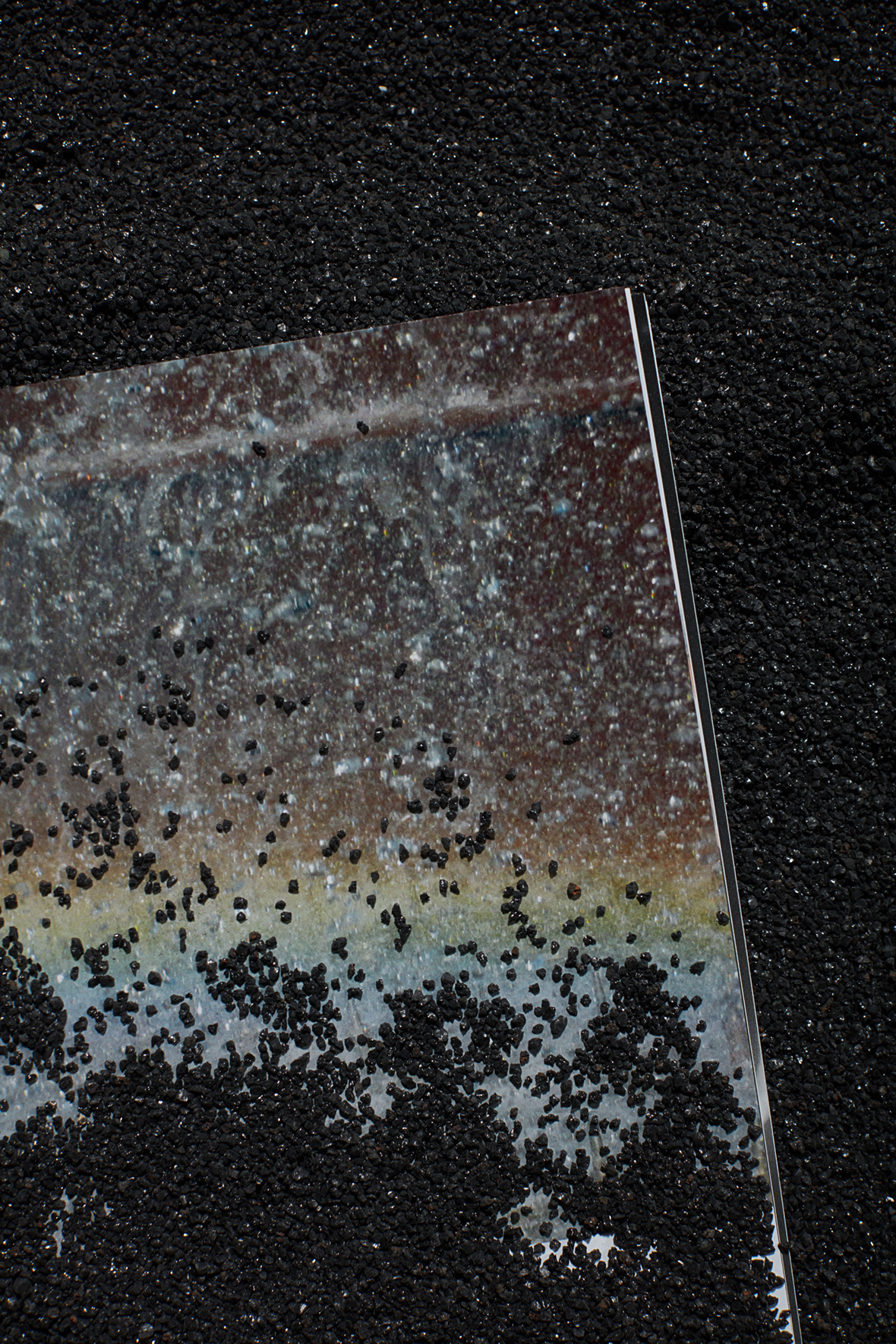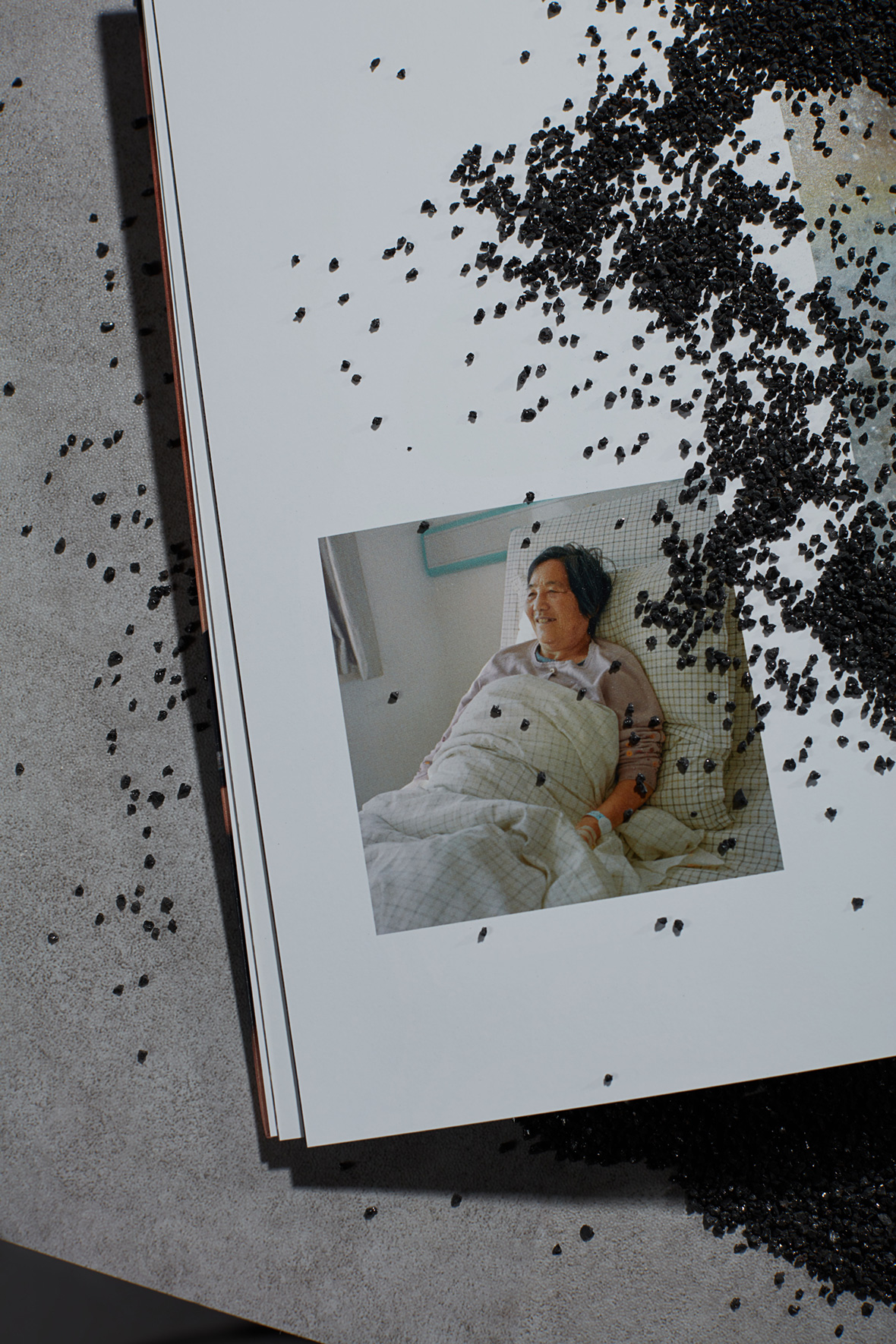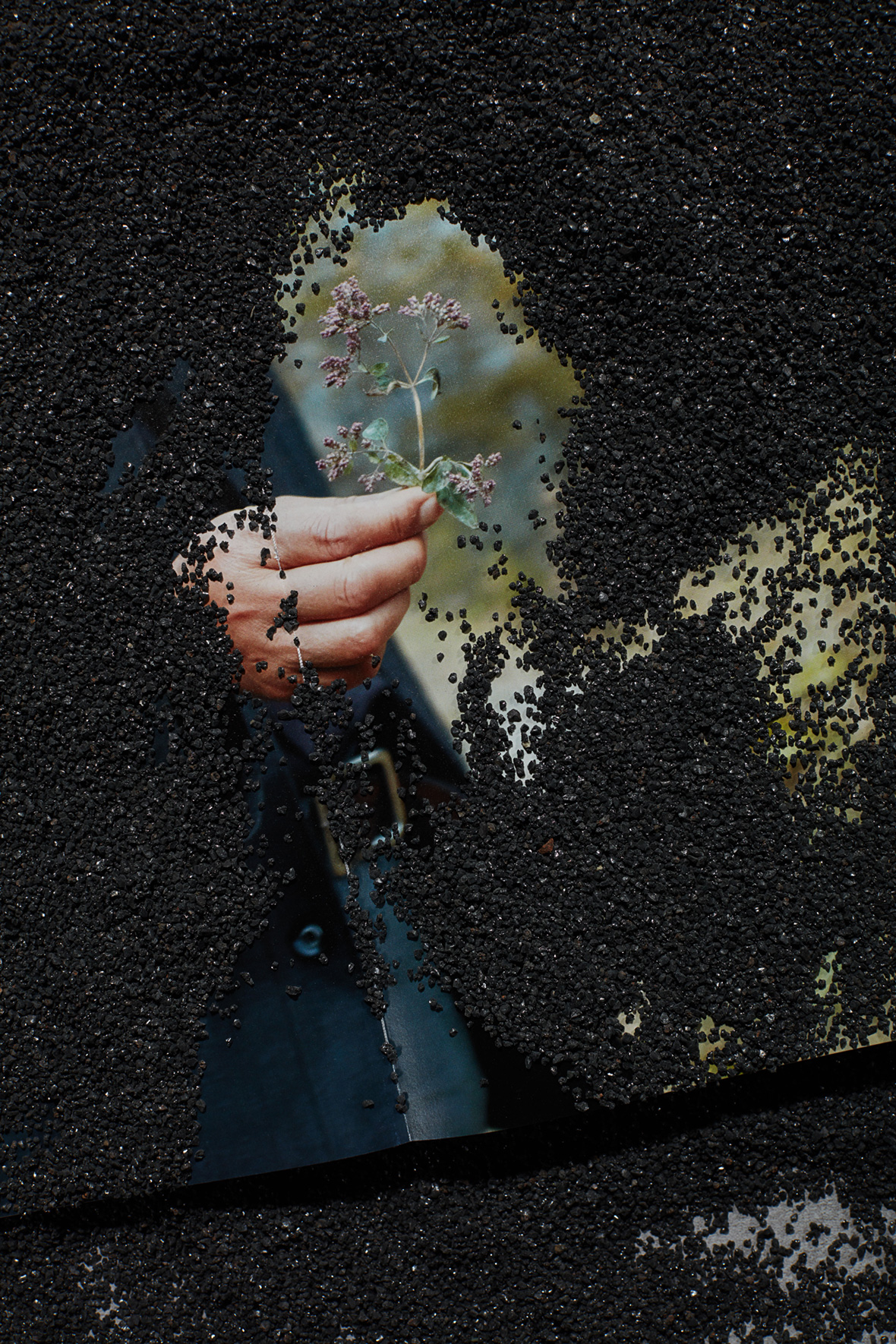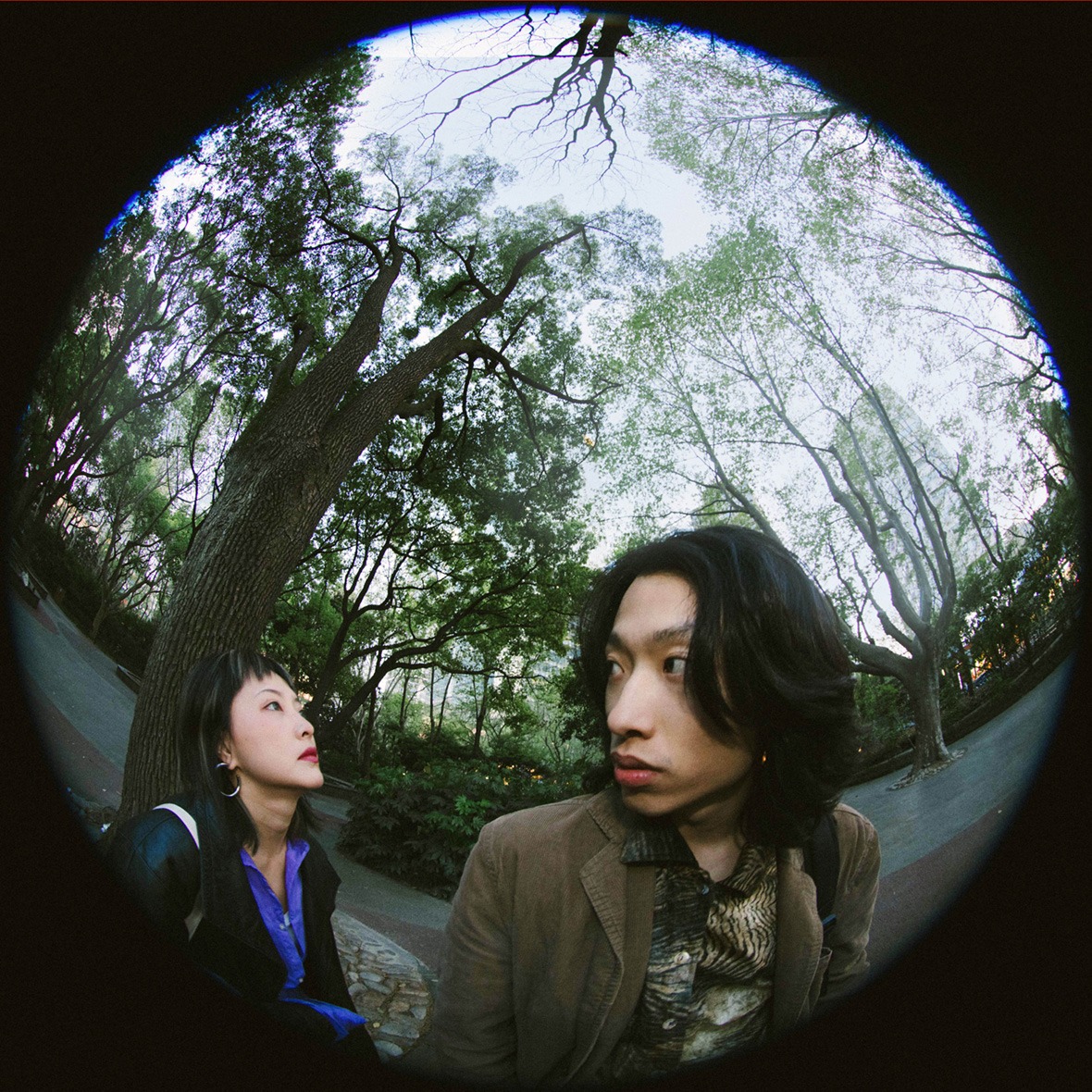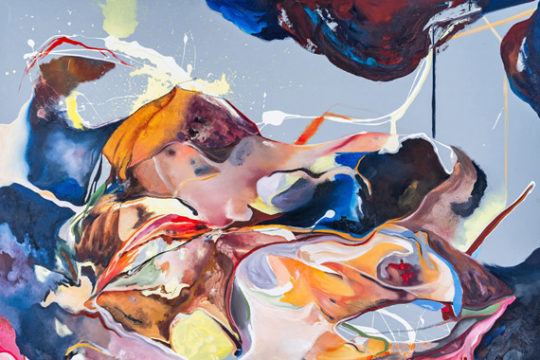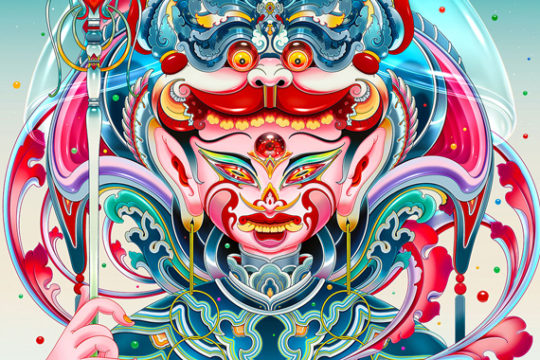
Xiangyue is an independent platform dedicated to building a community around art photography. In support of this effort, online, it publishes WeChat articles and Bilibili vlogs, its content running the gamut from artist interviews to explorations of how to analyze a photograph; offline, it hosts workshops and photography exhibitions. Based in Shanghai, it currently consists of a small team of three: Liu Bo, Ding Ding, and Zhong Linjiang. One of their various endeavors is their eponymous photo books, which compile the work of a few dozen photographers per issue.
“象曰”是一家致力于构建艺术摄影社区的独立平台,在线上,他们通过微信文章和 B 站视频,分享艺术家访谈和照片分析等丰富内容;在线下,则举办了一系列工作坊和摄影展览。“象曰”总部位于上海,目前团队有三名成员:刘波、丁丁和钟林江。团队推出了一本同名摄影作品杂志,每期都会展示数十位摄影师的作品。
In the early stages of building the Xiangyue community, the team started a WeChat group in which members could only share photos, and nothing else. The rule was strictly enforced, and whoever sent anything else was booted from the group. As the chat room became flooded with images, an idea began to form, one that ran counter to the conventional fascination with digitalization. “We thought it would be such a pity for these outstanding works to languish on a phone screen,” says Zhong. “If the pictures were in a book, presented in the medium of paper, it would allow these works to last forever—it would truly embody their value.” Inspired, they set up a crowdfunding page and opened a call for submissions for the first issue, which ultimately came out in October 2019. Three photobooks have been published since, and the fourth is imminently on the way.
在“象曰社区”成立初期,团队建了一个微信群,除了分享照片之外,群里不会发任何其他内容,否则就会被踢出群。随着群里分享的图片内容越来越丰富,他们逐渐有了一个与主流数字狂热背道而驰的想法。钟林江说:“我们觉得这些优秀的作品只能寂寂无闻地留在手机内是一件很可惜的事情。如果能印刷成书,以纸为媒介呈现,这些图片就能永远留存,真正体现它们的价值。”受此启发,他们创建了一个众筹页面,并为第一期征集投稿。最终,《象曰》杂志创刊号于 2019 年 10 月出版问世,自那以后,他们已经推出了三期摄影杂志,第四期也即将出版。
In a world where so much has been invested into developing and proliferating digital media, it seems meaningful that Xiangyue sees the digital realm as the one where an image would stagnate. It’s easy to understand why, though: online, an image can drown among a billion others. In book format, by contrast, we can see and feel where a book begins and ends, and perhaps that familiar limitation still makes for a better experience of content than the limitlessness of the digital world.
在一个大力发展和普及数字媒体的时代,《象曰》却反其道而行,他们认为数字世界反而会让摄影沦为一潭死水。原因其实很好理解:在线上,一张照片会埋没在铺天盖地的图片信息里;而纸媒这种形式,却能让我们看见和感知一本书的始末,这种熟悉的边际感,比起无边无际的数字世界,或许更能为读者提供更好的内容体验。

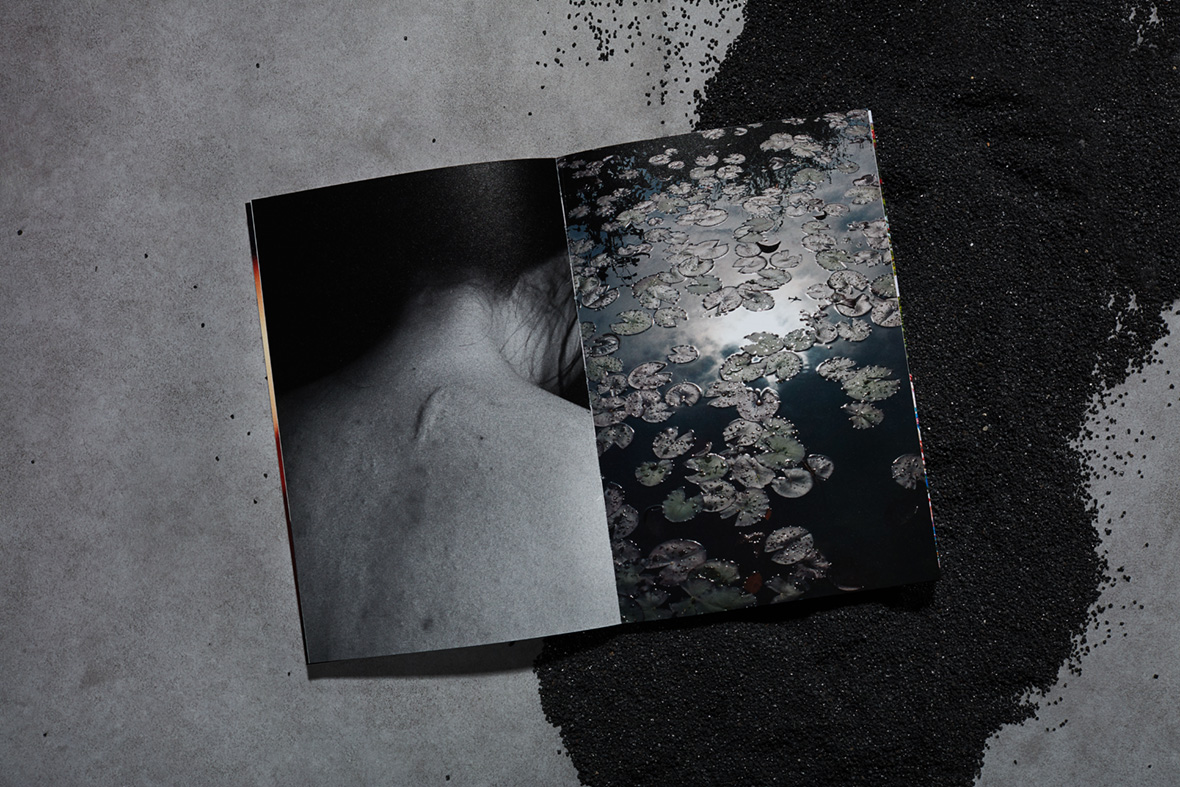
Zhong says many of their followers have asked about the origin of the name Xiangyue (象曰 in Chinese). The name was chosen by Xiangyue founder Shitou, who passed away last March, and to whom the third issue is dedicated. Xiang is one way to say “appearance” or “image,” but its original meaning is “elephant”–and surprisingly, the double meaning illustrates something of Xiangyue’s ideology.
Since elephants were a seldom-seen animal in ancient times, they came to stand in for distant or abstract concepts; the character is thus often used in words involving “the indefinite, the ambiguous,” says Zhong, offering examples such as imagine [想象], abstract [抽象], impression [印象], and maybe most importantly, image or imagery [意象]. The second syllable yue [曰] means to say or convey, so the more direct interpretation is simply of an image saying something. But the name intentionally retains another sense that’s far more nebulous.
很多粉丝都曾问过钟林江“象曰”这个名字的来历。这个名字其实是由象曰创始人石头所取的,遗憾的是他已在去年 3 月离开世界,第三期杂志的诞生亦是为了向他致敬。“象”有“表象”或“图象”的意思,但其本义是“大象”,这种双重含义却恰好诠释了“象曰”背后的深层理念。
在古时,大象并不常见,因而会被用以代表遥远或抽象的概念;这个字也因此常被用于表达“不确定、模糊”的词义,他举了一些例子,如“想象”、“抽象”和“印象”,当然还有最为重要的“意象”。至于第二个字“曰”意为“说或传达”,更直接的解释就是一个传达着某种意思的意象。但“象曰”这个名字其实有意保留了另一层更朦胧的含义。
This looser sense truly shows itself in the third issue of Xiangyue. Between the accessibility of smartphone cameras and photo editing software, the “perfect” shot seems more obtainable than ever – but that’s precisely what they’re veering away from. “There are many ways for a photo to be good,” says Zhong, initially shrugging off my question about how he curates photos for the books. “But personally,” he allows, “one kind of picture I would not select is the kind that underwent extremely painstaking polishing.”
The theme for the issue is a Chinese idiom, “the fish sink and the birds fall,” which describes animals’ reactions to profound beauty. Yet at a glance, some of the images in this volume might seem to be bewildering responses to such a prompt. A peeling decal of some cherry blossoms on the door of a dirty white car. A steamed-up washroom in somebody’s apartment, the sink counter full of soaps, detergents, a toothbrush in a mug. An uncomfortably close shot from just behind a swimmer about to dive into a river. Many other photos within are unfocused, blurry, or almost abstract. “We wanted to seek after beauty in an image, with no limit to form,” says Zhong, and indeed, this resulted in a book of images stretching the limits of what might be considered beautiful.
As rejections of the search for perfection in digital media, these images are ideal. Understanding them as responses to a theme related to beauty, though, requires the viewer to do some further digging on their own. One could push oneself to draw out poetic interpretations of the beauty of the above images. The decal: quiet, tired individuality. The bathroom: the warmth of a cluttered home. The swimmer: mankind’s vigor, in action. Alternatively, one might ask whether the photos themselves are meant to be beautiful, or if they actually depict the fish and birds responding to something else beautiful about the world.
这种宽泛的概念在《象曰》第三期“沉鱼落雁”征稿照片中得到了淋漓诠释。随着智能手机和照片编辑软件的普及,使得“完美定格”的照片似乎比以往任何时候都更易于获得,但本期主题却背道而弛。当我问及作为主编的他是如何选择照片时,他有点不以为然,只回道:“一张好的照片可以是各种各样的。但就我个人而言,有一种照片是我绝对不会选的,就是那种明显经过大量后期修图的照片。”
本期期刊的主题是“沉鱼落雁”,这个成语描述的是动物看到绝色美人之后的反应。然而,乍一看,本期所选的一些照片却似乎与这个主题差之千里:破旧的白色汽车,车门上斑驳脱落的樱花贴纸;某个公寓里雾气弥漫的浴室,水槽上堆满肥皂、清洁剂,以及一支装在杯子里的牙刷;还有一张是从即将纵深一跃跳入河中的游泳者身后捕捉的特写镜头,其拍摄角度看上去感觉份外别扭。里面的许多照片都是失焦、模糊或抽象的。“我们试图在意象中寻找美,不设任何形式的限制。”钟林江解释道,于是便有了这一本“用不同意象拓展美的界限”的杂志。
若说是要驳斥数字媒体对完美的追求,这些照片已经足以诠释。但如何让观众理解这其实更是“对美的延伸”,则需要人们自行深入探索。要在这些列举照片中,推敲出诗意的阐述,读者是需要下功夫去思索的。车门上的贴纸暗指着安静和疲惫的个体;浴室代表着一个乱哄哄的家所带来的温馨感;以及纵深跳下水的泳者,他是人类活力与能动性的体现。或许人们也会问,这些照片本身就是为了表现美丽,抑或它们代表了“鱼”和“雁”对美丽事物的真实反应。


Suffice it to say that Xiangyue is interested in the way that an image that seems nondescript, framed the right way, can flick a switch in a viewer’s imagination. To the attentive eye, the apparently imperfect image becomes more worthy of attention than the perfect; the ordinary moment reveals itself to be more unique than the rare; the unfocused lens shows something that would otherwise never have been seen. Ultimately, if a picture doesn’t seem to be about beauty at first, one has to admit that its inclusion in the book’s narrative elevates it to be part of the conversation.
In the editor’s letter of the issue, Zhong asks whether the photo book is a work of art in its own right, then humbly declines to answer—but in fact, the editorial choices are no small part of what makes it engaging. “Editing a photography book, one needs to pay close attention to story and rhythm,” he says. “There were some photographs that I liked but, to my regret, didn’t select, because they didn’t align with either the given theme or the overall style of the book.” Photos are arranged with great attention to detail, and distracting information, such as photographers’ names, is left to the end credits so that the images can tell their story unimpeded. Certain photos are isolated to give them space to soliloquize; others are juxtaposed to put them in conversation with each other, or so they can amplify each other’s respective messages.
毋庸置疑,《象曰》想传达的是,看似无可名状的图像,若加以恰当的装裱,却能触动观者想象力的开关。对于细心的观众来说,表面上不完美的意象比完美的意象更引人入胜;平凡的瞬间比难得的时刻更为独特;失焦的镜头反而展示出原本看不到的东西。归根结底,如果一幅画初看之下并不那么美,那当它被纳入本书时,便使得它成为对话的一部分。
在本期杂志的“编辑之语”中,钟林江提出一个问题:这本摄影书本身是否是一件艺术品,但又谦虚地拒绝回答。事实上,本书引人入胜之处也在于编辑的选图。“在编辑摄影书时,要特别注意故事性和节奏。有些照片我很喜欢,但很遗憾没有收录,因为它们不符合给定的主题或书的整体风格。”在排版上,也要特别注重照片细节,一些容易分散注意力的信息(如摄影师的名字)都放到了书的最后部分,以使照片自身可以一气呵成地讲述故事。一些照片被隔离出来,留出独白的空间;有些则被并列排放,可供彼此对话呼应,或强调各自所传达的信息。

Near the back of the book is a page that simply reads, “Every book of Xiangyue is a seed.” What do they hope will grow out of that seed? “Our objective, on some level, is to inject fresh blood into Chinese photography,” he says, “and to change some of the status quo of photography and art circles.” He notes that the majority of China’s photography enthusiasts aren’t pursuing the medium as a means to make contemporary art. In the photography section of video platform Bilibili, most channels tend to focus on technical subjects such as camera specs and lenses. Xiangyue’s channel is an anomaly in the photography section of video platform Bilibili, where other channels tend to focus on technical subjects such as camera specs and lenses.
这本摄影书结尾有一页写着:“每一本《象曰》杂志都是一颗种子。”那他们希望这颗种子能长出什么呢?“从某种程度上说,我们的目标是为中国摄影注入新鲜血液,改变摄影和艺术界的一些现状。”他解释道。他指出,中国大多数摄影爱好者并不是把摄影作为创作当代艺术的手段。在 B 站的摄影版块中,大多数账号都侧重于研究相机、镜头等技术题材。而“象曰频道”却是平台上的一个异类,它侧重于提供艺术家采访和讨论如何分析一张照片之类的视频内容。
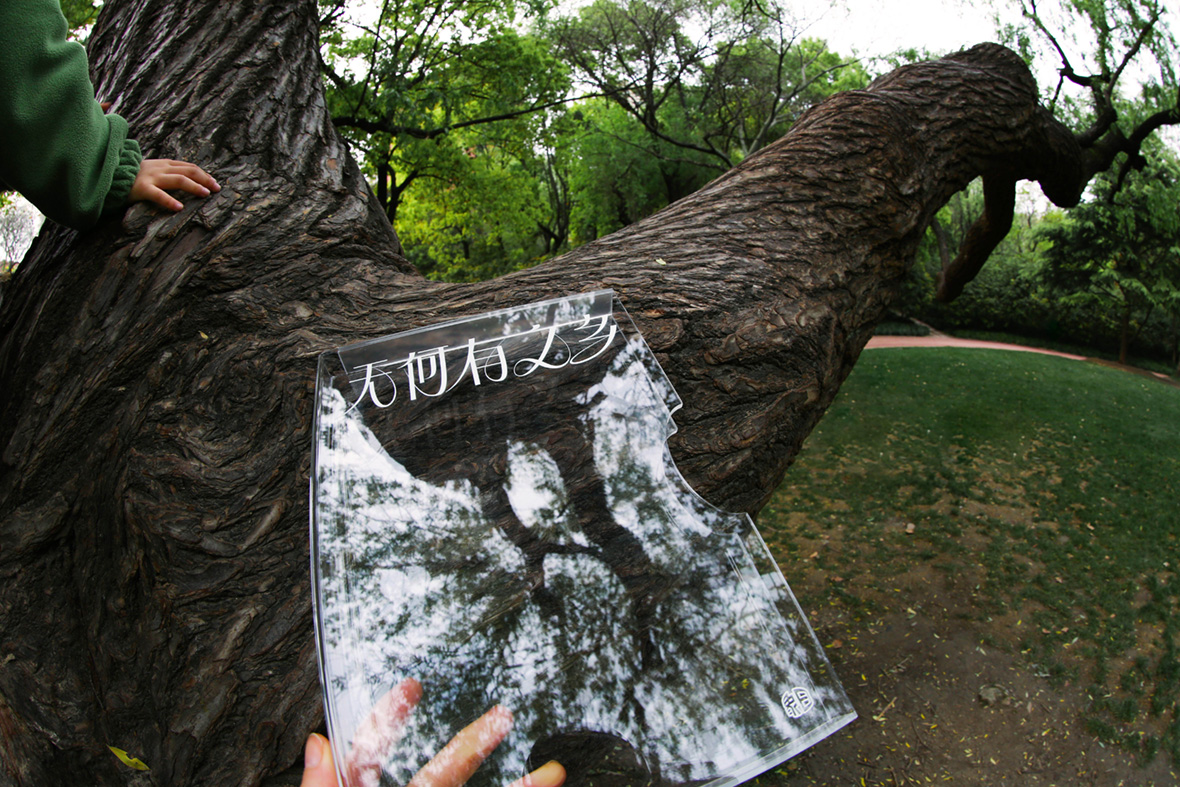
None of this is to say that Xiangyue is explicitly anti-digital, anti-photo editing, or anti-technique. Their logo, inspired by the curvature of a fish-eye lens, is tied to their belief in viewing the world from different perspectives. And in a way, the Xiangyue ethos certainly seems to be a response to contemporary trends in Shanghai; for instance, the team’s humble workshop is not far from glitzy high-rise malls that grant pride of place to virtual reality pop-ups, increasingly sophisticated interactive media displays, and sportswear ads with models edited to look somewhere between unreal and hyper-real. For the upcoming fourth issue, they draw inspiration from Zhuangzi’s belief in uncovering the merits of nothingness, which feels particularly aligned with the team’s overall vision. Amid all this rush for faster, more advanced, higher quality, new and improved, Xiangyue prefers to slow down. They find the beauty that already exists all around us, turn it into a seed, plant it, and wait patiently for it to grow.
但这一切并不代表“象曰”就是反数码、反后期或反技术,形似鱼眼的 Logo 更像是一种看世界的眼光,以作为某种对上海当代潮流的回应;例如,团队简陋的工作室不远处就是繁华的大型购物中心,而这些购物中心往往是各种虚拟现实装置和复杂交互式媒体的展示平台,还常常能看到一些运动服装广告中,经过后期修图,看上去近乎虚幻与超真实的模特。在这座城市急切追逐更快、更先进、更高级、更新颖和不断提升的浪潮中,《象曰》的第四期“无何有之乡”诞生了——它的本意是什么都没有的地方,用来指一种精神境界,并影射某种价值观。不过,眼下尚且的荒芜又有什么呢?只要你愿意放慢脚步,发现我们周围本已存在的美,把它变成一粒种子,播撒下去,然后耐心地等待它破土而生,无有便是所有。
Like our stories? Follow us on Facebook and Instagram.
Website: www.xiangyue2020.com
Instagram: @xiangyue2020
Weibo: ~/elefantfoto
Bilibili: ~/象曰
Contributor: Kiril Bolotnikov
Photographer: Chan Qu
Chinese Translation: Olivia Li
网站: www.xiangyue2020.com
Instagram: @xiangyue2020
微博: ~/elefantfoto
哔哩哔哩: ~/象曰
供稿人: Kiril Bolotnikov
摄影师: Chan Qu
英译中: Olivia Li


